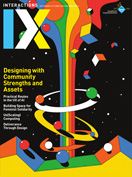Authors:
Nick Kelly, Gareth Kindler, James Watson, Tim Carden
Australia—like much of the world—is facing a biodiversity crisis. Hundreds of species are in danger of extinction due to the destruction and degradation of their habitats. Populations of threatened species have more than halved since 1985. To have a chance at survival, these species require federal government recovery plans for funding and habitat protection.
The site Threatened Australians began as a discussion between a conservation scientist and an interaction designer who distilled the problem: We, as a scientific community, know so much about threatened species, yet there is no simple way for laypeople to connect with them.
The problem became a brief: There are so many government and scientific datasets about these species available. How might they be used to promote democratic action to save threatened species? A small budget was obtained through internal university funding based on a commitment to produce a website that took users through entering their postcode, to connecting in a meaningful way with local threatened species, to taking actions to help save them.
Several key assumptions permitted us to begin design work:
- We defined local as being the federal electorate of the user. This served a dual role of connecting users to species as well as to the power structure (federal government) that needs to be recruited to save them.
- We approached meaningful connection from an understanding that it would be easier for users to connect with one species than with twenty, and that images, maps, and icons would aid this connection.
- The actions needed to have a low threshold of entry (e.g., writing to a local representative) but a high ceiling (e.g., getting involved with local action groups).
- We decided to feature threatened animals and merely mention plants, due to time and budget constraints and research showing that people are more likely to act to save animals than plants.
Cycles of functional prototyping—in Figma, then in HTML—and refinement were grounded in consultation with scientists, environmental advocacy experts, laypeople, and a group of friendly interaction designers.
The final design has two overarching principles:
- Education: If Australians know more about threatened species in their area, then they'll care more about saving them. Interaction design can allow the (already established) datasets produced by conservation scientists to do this work.
- Communication: Communicating with local elected representatives about the issue of threatened species should be made as easy as possible. Interaction design can remove as many barriers as possible in the movement from knowledge to meaningful action.
 |
Mobile experience of the final site showing the homepage. |
The project is called Threatened Australians as a way of encouraging people to notice how the word Australians is used in everyday language—usually it refers only to people. The title of the projects asks an implicit question: Are all species Australians or just humans? It highlights the urgent need for politicians to represent all species within their electorates, not just Homo sapiens.
 |
Mobile experience of the final site showing information about a threatened species [including mapping of species location in relation to electorate). |
 |
Initial functional prototype in Figma for use in design workshops with experts in environmental advocacy. |
 |
Mobile experience of the final site showing ways that users can take action to save threatened species. |
 |
Layout of key screens from the nearly completed design. This was created through a mash-up of screen grabs from a HTML MVP overlaid with Figma elaborations and improvements. |
Nick Kelly is a senior lecturer in interaction design at Queensland University of Technology, Australia. His research looks at online networks and design cognition. His applied research focuses on ways that interaction design can contribute to teacher education, environmental education, and housing security. [email protected]
Gareth Kindler is a Ph.D. student at the University of Queensland, Australia. His work is concerned with biodiversity conservation and its intersection with the politics of resource allocation. [email protected]
James Watson is a professor of conservation science at the University of Queensland, Australia. He leads the Green Fire Science research group (www.greenfirescience.com), whose mission is to do applied research that is linked directly to the practice of conservation. [email protected]
Timothy Carden is a Web developer at Digital Wando and occasional university educator in Web design. [email protected]
Copyright held by authors
The Digital Library is published by the Association for Computing Machinery. Copyright © 2022 ACM, Inc.








Post Comment
No Comments Found